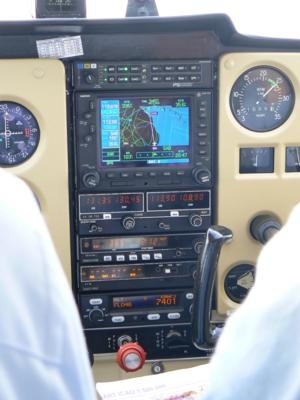Mon, Sep 01, 2014
Allows Installation Of ADS-B Out Compliant Device In Thousands Of Airplanes
The FAA has granted STC approval to Trig Avionics for the installation of its TT31 transponder with Garmin’s GNS 400W and 500W series of GPS navigators. Now thousands of aircraft owners in the U.S. have a remarkably cost effective way to become ADS-B Out compliant, using their existing GPS with a TT31 transponder.

Trig’s TT31 transponder is already established as the easiest ‘plug and play’ retro-fit for the KT76A and KT78A - but it’s also ADS-B Out capable too. This new STC makes the TT31 a logical choice for aircraft owners who already own a Garmin navigator.
“There are many U.S. aircraft that have a Garmin 430W or 530W installed," said Trig CEO Andy Davis. "Our ADS-B STC shows how practical and affordable a compliant ADS-B Out solution can be when matched with our Trig TT31 transponder using version 3.13 software.”
Peregrine of Denver is Trig’s STC partner. CEO David Rankin ran the flight test program, conducting the validation of the TT31 transponder and 400W / 500W series GPS equipment.
“The install of Trig equipment was very easy. The TT31 used the existing aircraft transponder antenna, this is a really attractive retro-fit option," Rankin said. 'For ADS-B Out we installed a Trig tray, the set up and integration with the 430W WAAS GPS was straight forward. I’m certain this equipment combination will have a broad appeal as pilots want to meet the ADS-B mandate with the minimum expense. Trig’s TT31 matched with an existing 430W or 530W makes compliance totally practical.”
Trig’s STC covers a wide range of aircraft types and for those types not currently listed the FAA allows local Field Approval. “Trig products combine great features and performance and the TT31 is no exception," Davis said. "With a list price of $3,206 aircraft owners should look seriously at our solution, it really stacks up as a compelling way to become 2020 ready.” Trig has a comprehensive dealer network in North America, with a Trig Approved Service Center at Wichita, Kansas. Trig are also partners with the NextGen GA Fund. This provides customers with access to a comprehensive loan scheme - specifically designed to help GA aircraft owners pay for their ADS-B equipment and related installation.
(Image provided by Trig Avionics)
More News
A Puff Of Smoke Came Out From The Top Of The Engine Cowling Followed By A Total Loss Of Engine Power On May 9, 2025, about 1020 mountain daylight time, an experimental amateur-buil>[...]
From 2022 (YouTube Edition): Jenny, I’ve Got Your Number... Among the magnificent antique aircraft on display at EAA’s AirVenture 2022 was a 1918 Curtiss Jenny painstak>[...]
Very High Frequency (VHF) The frequency band between 30 and 300 MHz. Portions of this band, 108 to 118 MHz, are used for certain NAVAIDs; 118 to 136 MHz are used for civil air/grou>[...]
“From approximately November 2021 through January 2022, Britton-Harr, acting on behalf of AeroVanti, entered into lease-purchase agreements for five Piaggio-manufactured airc>[...]
Microburst A small downburst with outbursts of damaging winds extending 2.5 miles or less. In spite of its small horizontal scale, an intense microburst could induce wind speeds as>[...]
 NTSB Prelim: Lee Aviation LLC JA30 SuperStol
NTSB Prelim: Lee Aviation LLC JA30 SuperStol Classic Aero-TV: Curtiss Jenny Build Wows AirVenture Crowds
Classic Aero-TV: Curtiss Jenny Build Wows AirVenture Crowds ANN's Daily Aero-Term (05.30.25): Very High Frequency (VHF)
ANN's Daily Aero-Term (05.30.25): Very High Frequency (VHF) Aero-News: Quote of the Day (05.30.25)
Aero-News: Quote of the Day (05.30.25) ANN's Daily Aero-Term (05.31.25): Microburst
ANN's Daily Aero-Term (05.31.25): Microburst



